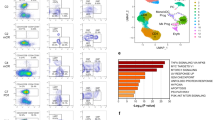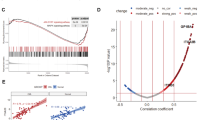Abstract
The bone marrow microenvironment (BMM) provides a protective niche that supports the growth and survival of leukemic stem cells. It is known that a regulation of homing to BM and retention of hematopoietic stem cells (HSCs) occur by SDF-1/CXCR4 axis in BMM. Previously, we found that altering the BMM by the CXCR4 antagonist led to enhanced cytotoxic activity of immune cells, which leads to increased susceptibility of leukemic cells to chemotherapeutic agents such as cytosine arabinoside (Ara-C) in leukemic BMM. However, no reports have yet shown an architectural change of BMM such as the sinusoidal vessel and megakaryocyte by plerixafor treatment. Thus, we performed immunohistochemistry and observed that the capillary density of sinusoidal vessels was highly increased by CXCR4 antagonist with Ara-C in leukemia, showing the reconstruction of BMM with megakaryocytes in sinusoidal vessels by dual treatment. The number of megakaryocytes was also increased in the Plerixafor treated group, compared to that of leukemic or wild groups. Ultimately, we addressed the normalization of megakaryocyte and BMM in leukemia by showing the reconstitution of the sinusoidal vasculature by Plerixafor. This study proposed that chemotherapy with CXCR4 antagonist represents an advanced therapeutic strategy of targeting the leukemic niche.
Access this chapter
Tax calculation will be finalised at checkout
Purchases are for personal use only
Similar content being viewed by others
References
Krause DS, Fulzele K, Catic A et al (2013) Differential regulation of myeloid leukemias by the bone marrow microenvironment. Nat Med 19:1513–1517
Burger JA, Peled A (2009) CXCR4 antagonists: targeting the microenvironment in leukemia and other cancers. Leukemia 23:43–52
Zeng Z, Shi YX, Samudio IJ et al (2009) Targeting the leukemia microenvironment by CXCR4 inhibition overcomes resistance to kinase inhibitors and chemotherapy in AML. Blood 113:6215–6224
Mercier FE, Ragu C, Scadden DT (2011) The bone marrow at the crossroads of blood and immunity. Nat Rev Immunol 12:49–60
Hooper AT, Butler JM, Nolan DJ et al (2009) Engraftment and reconstitution of hematopoiesis is dependent on VEGFR2-mediated regeneration of sinusoidal endothelial cells. Cell Stem Cell 4:263–274
Han AR, Lee JY, Kim HJ et al (2015) A CXCR4 antagonist leads to tumor suppression by activation of immune cells in a leukemia-induced microenvironment. Oncol Rep 34:2880–2888
Machlus KR, Italiano JE Jr (2013) The incredible journey: from megakaryocyte development to platelet formation. J Cell Biol 201:785–796
Wang JF, Liu ZY, Groopman JE (1998) The alpha-chemokine receptor CXCR4 is expressed on the megakaryocytic lineage from progenitor to platelets and modulates migration and adhesion. Blood 92:756–764
Hamada T, Mohle R, Hesselgesser J et al (1998) Transendothelial migration of megakaryocytes in response to stromal cell-derived factor 1 (SDF-1) enhances platelet formation. J Exp Med 188:539–548
Niswander LM, Fegan KH, Kingsley PD et al (2014) SDF-1 dynamically mediates megakaryocyte niche occupancy and thrombopoiesis at steady state and following radiation injury. Blood 124:277–286
Malara A, Currao M, Gruppi C et al (2014) Megakaryocytes contribute to the bone marrow-matrix environment by expressing fibronectin, type IV collagen, and laminin. Stem Cells 32:926–937
Acknowledgments
This study was supported by the Basic Science Research Program through the National Research Foundation of Korea (NRF) funded by the Ministry of Education (2017R1D1A1B03031406).
Author information
Authors and Affiliations
Corresponding author
Editor information
Editors and Affiliations
Rights and permissions
Copyright information
© 2018 Springer International Publishing AG, part of Springer Nature
About this chapter
Cite this chapter
Lee, J.Y., Han, AR., Hwang, Hs., Kim, D.C., Min, WS., Kim, HJ. (2018). Role of CXCR4 Antagonist in Megakaryocyte Reinstatement with Increased Sinusoidal Vessel Density. In: Thews, O., LaManna, J., Harrison, D. (eds) Oxygen Transport to Tissue XL. Advances in Experimental Medicine and Biology, vol 1072. Springer, Cham. https://doi.org/10.1007/978-3-319-91287-5_67
Download citation
DOI: https://doi.org/10.1007/978-3-319-91287-5_67
Published:
Publisher Name: Springer, Cham
Print ISBN: 978-3-319-91285-1
Online ISBN: 978-3-319-91287-5
eBook Packages: Biomedical and Life SciencesBiomedical and Life Sciences (R0)




